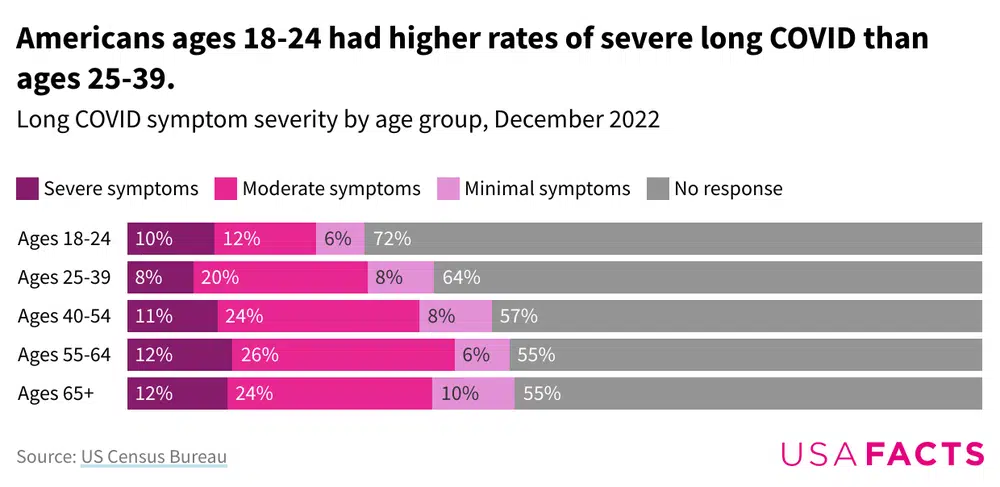According to the Census Bureau, of the 127 million Americans who have had COVID-19, 28% have developed long COVID.
Data collected by the Bureau’s Household Pulse Survey in December 2022 reveals that long COVID has not affected people equally.[1] Long COVID is the condition in which someone infected with COVID-19 experiences symptoms for months or years afterward. The Bureau defined long COVID as having coronavirus symptoms that last for three months or longer.
Thirty-one percent of people ages 40–54 had long COVID, a rate higher than the average for all Americans ages 18 and up.
People older than 55 had the highest rates of severe long COVID. However, people aged 18 to 24 have severe long COVID at a rate two percentage points below that. The rate dips even lower for people 25 to 39 before rising again for people ages 40 and up.
People 40 and older had the highest rates of moderate symptoms, while the 65+ age group had the highest rates of minimal long COVID.[2]

While symptoms vary from person to person, they can have a variety of respiratory, cardiovascular, neurological, and digestive effects.
The most reported symptoms include, but are not limited to, extreme fatigue, fever, difficulty breathing, chest pain, heart palpitations, brain fog, depression, and anxiety. Some people have also experienced changes in their menstrual cycles as a result of COVID-19.
The medical community’s understanding of long COVID’s causes, risk factors, and effects is still developing. Older Americans are more likely to be vaccinated than younger Americans, and the Centers for Disease Control and Prevention identified the severity of a person’s COVID-19 symptoms and lack of vaccination as two potential predictors of long COVID. According to the Government Accountability Office, the research is still inconclusive on both fronts.
Read about long COVID by gender and by race. To get a comprehensive look at health in the US, visit the 2023 State of the Union in Numbers. Get the data directly in your inbox by signing up for our weekly newsletter.
[1] While the data was collected in December 2022, the Bureau asked people whether they had experienced long COVID at any point in time, not only at the time of the survey.
[2] The 65+ age group had the highest rate of severe COVID and second highest rate of moderate COVID.







